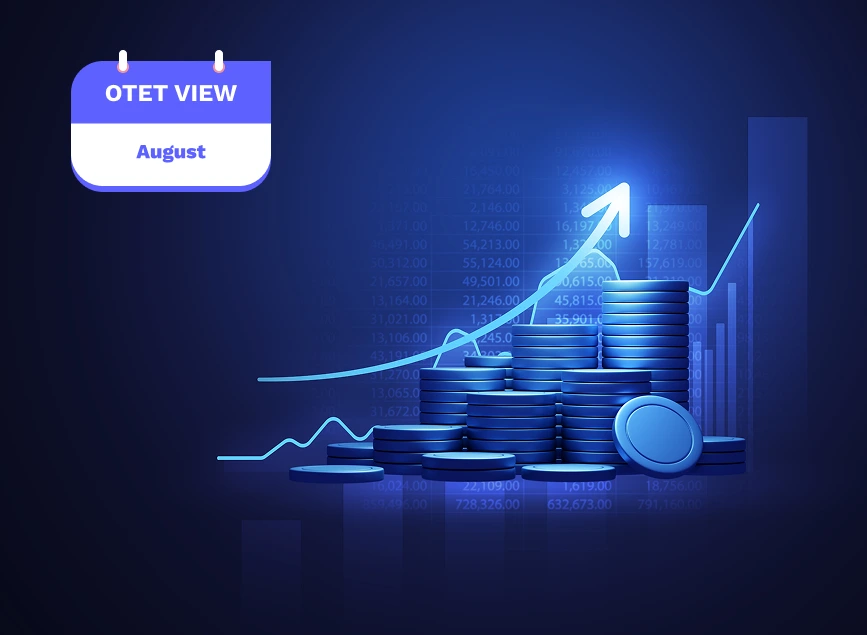
Global Economic Outlook – August 2025
Introduction
Global growth regained some momentum in mid‑2025 as major economies adapted to lingering trade tensions. Leading indicators show the world economy exiting the weak spell of early‑2025 – HCOB’s euro‑zone composite PMI rose to 51.0 points in July, it’s highest in 11 months, as services demand improved and manufacturing approached stability. U.S. activity also strengthened, with S&P Global’s July composite PMI reaching an 11‑month high of 54.6, thanks to Service PMI improved to 55.2 (Manufacturing: 49.5). Underlying inflation eased in most regions but remained above targets; the euro‑zone’s headline inflation held steady at 2 % in July with core inflation at 2.3 %, and U.S. consumer prices rose 2.7 % y/y in June (Core CPI:29%). Nevertheless, geopolitical factors threaten to unseat the recovery. The U.S. administration triggered a new trade war by imposing 15 % tariffs on imports from several partners in late July, prompting retaliatory measures and spooking financial markets. Central banks remain cautious: the U.S. Federal Reserve kept rates at 4.25–4.50 %, citing inflation risks; the European Central Bank (ECB), having halved its key rate to 2 % by June, paused further cuts; and the Bank of Japan (BOJ) held its rate at 0.5 % while signaling the possibility of hikes later in the year. Ahead of August, investors watch whether tariffs will derail the fledgling recovery or whether policy support and resilient services sectors can sustain growth.
United States
July 2025 economic review
The U.S. economy displayed mixed signals in July. Labour market. The July employment report showed non‑farm payrolls edged up by 73 000, the smallest gain since April. Unemployment rose to 4.2% and the labour force participation rate ticked down to 62.2 %, while previous months’ payroll gains were revised lower. Healthcare and social‑assistance industries added jobs, but federal government employment fell; long‑term unemployment accounted for nearly a quarter of the jobless. Average hourly earnings increased 0.3 % m/m and 3.9 % y/y. The modest job growth suggested hiring momentum had stalled, reinforcing concerns that trade tensions were weighing on corporate sentiment.
Inflation: June consumer prices (latest available) rose 2.7 % from a year earlier and 0.2 % m/m. Core CPI (excluding food and energy) increased 2.9 % y/y. Food prices climbed 3.0 % while energy prices fell 0.8 %. Shelter and services costs remained the primary drivers. Producer input costs remained elevated—S&P Global’s input price index for July stood at 61.9, with services companies reporting a similar surge at 61.4 due partly to tariffs. Inflation has moderated from 2024 highs but could re‑accelerate as tariffs filter through.
Activity indicators: The economy rebounded strongly in the second quarter, with GDP expanding at a 3 % annualized rate, reversing the 0.5 % contraction in Q1. However, the surge largely reflected a record 30 % drop in imports, which added 5 percentage points to GDP, while underlying domestic demand grew only 1.2 %. Consumer spending increased 1.4 % but business investment slowed, residential investment contracted, and government spending fell. High‑frequency surveys painted a mixed picture. The ISM manufacturing PMI slipped to 48.0 % (contraction), with employment at 43.4 and prices paid at 64.8, while the services PMI (S&P Global flash) surged to 55.2 – the fastest pace since April 2024. Housing data remained weak; single‑family housing starts were 851 000 units (seasonally adjusted annual rate) in July, down 14.1 % from a year earlier.
Policy: At its July 30 meeting, the Federal Open Market Committee (FOMC) kept the target range for the federal funds rate at 4.25–4.50 %. Chair Powell emphasized the need for “more data” before considering cuts and noted that inflation risks persist amid new tariffs. Two dissenting officials argued for an immediate cut. Fiscal policy has become more confrontational. President Donald Trump signed an executive order imposing 15 % tariffs on most foreign goods and dismissed the Bureau of Labor Statistics commissioner after the lackluster jobs report. These measures rattled financial markets and raised questions about data credibility. Despite political pressure, the Fed signaled that it would remain data‑dependent and guard against inflation.
August 2025 outlook and expectations
Looking ahead to August, analysts expect U.S. growth to slow as trade frictions and policy uncertainty bite. The sharp decline in imports that boosted Q2 GDP is unlikely to repeat; consumption may soften under higher prices, and businesses may curb investment as tariffs raise costs.
Markets now see more than 80 % probability of a Fed rate cut in September as weak hiring and trade tensions dampen confidence. However, if inflation re‑accelerates, the Fed may wait until later in the year. Fiscal policy remains unpredictable; additional tariffs or retaliatory measures could further disrupt supply chains and push prices higher. The housing market is expected to remain depressed due to high mortgage rates and rising construction costs. Corporate earnings season in August will offer insight into margins and the ability of firms to pass on tariff‑related costs. Overall, the U.S. economy is likely to expand at a slower pace, with growth driven mainly by services and government spending.
August is not a busy month in the economic calendar, still, we have some key economic data to watch, including:
NFP Report (Aug 1) – Labour data already published on Friday. July’s jobs report fell short of expectations. Nonfarm payrolls increased by just 73,000, missing forecasts and following significant downward revisions for June and May. The unemployment rate edged up to 4.2% (from 4.1%), while labor force participation declined for the third straight month.
ISM services PMI (Aug 5) and manufacturing PMI (Aug 1 final) – manufacturing is expected to remain below 50, though the new orders index may stabilize if supply chains adjust. Services activity is likely to stay robust, but the employment component will be watched for signs of layoffs.
July CPI (Aug 12) – markets anticipate another uptick because tariffs on consumer goods and strong wage growth will feed through. If headline inflation rises above 3 %, the Fed will likely delay rate cuts. Conversely, a soft reading could reinforce expectations for a September cut.
July retail sales (Aug 15) – important to gauge consumer resilience. Analysts forecast modest growth, but weakness in discretionary categories (e.g., autos) would signal caution.
FOMC minutes (Aug 20) – investors will scrutinize discussions on the impact of tariffs and the threshold for rate cuts.
Labour market data – initial jobless claims and the August employment report (Sept 6) will reveal whether July’s weak payrolls were a blip or the start of a trend. Most economists expect moderate job gains of around 100,000.
Q2 Earnings review so far.
As of early August 2025, the U.S. Q2‑2025 earnings season is roughly two‑thirds complete, and results have been stronger than many analysts expected. According to LSEG data, about 317 S&P 500 companies had reported results through July 30, meaning roughly 63 % of the index’s constituents have released their earnings. Those reports show that year‑on‑year earnings growth for the index is tracking at about 9.8 %, up from 5.8 % projected at the start of July.
The win‑rate—the share of companies beating analysts’ consensus forecasts—has been unusually high. LSEG’s data show 81 % of reporting S&P 500 companies have topped earnings expectations, well above the 76 % average seen over the past four quarters. A separate tally cited by Wall Street Horizon and FactSet put the “beat” rate at around 80 % on both earnings and revenue, which is better than the 1‑, 5‑, and 10‑year averages. Strong results from mega‑cap technology firms—particularly Microsoft, Meta Platforms, and Alphabet—have been a major driver of this positive surprise. These companies continue to benefit from heavy investment in artificial‑intelligence infrastructure, bolstering both earnings and investor sentiment.
Outside the large‑cap index, earnings results have also been supportive but a bit more mixed. Smaller U.S. companies have delivered profit growth, yet win rates are closer to their historical average and guidance is more cautious given new tariffs and softer domestic demand. Globally, the earnings season just began in late July; Wall Street Horizon noted that around 14 % of more than 11,000 companies worldwide had reported results by July 31 and that the peak weeks of reporting would occur from July 28 to Aug 15, when over 2,000 reports were scheduled per week. Investors, therefore, still face a busy calendar of corporate releases in August, with particular focus on the remaining “Magnificent Seven” technology giants (Apple and Amazon report in the first week of August, while Nvidia reports on Aug 27). Overall, Q2 results so far point to solid earnings momentum and an unusually high beat rate for the S&P 500, though markets remain sensitive to trade‑policy developments and any signs of consumer or labour‑market weakness.
Euro Area
July 2025 economic review
Euro‑zone growth showed tentative improvement in July yet remained fragile. Activity indicators. The preliminary HCOB composite PMI rose to 51.0 in July, an 11‑month high, as services activity improved and manufacturing approached stability. The services PMI climbed to 51.2 from 50.5, while the manufacturing PMI increased to 49.8, its highest since July 2021. Output remained stagnant, but new business stopped declining for the first time since May 2024. Germany’s manufacturing index reached a 35‑month high of 49.1, and Ireland continued to lead with a reading above 53. Inflationary pressures eased; services input prices fell to a nine‑month low.
Economic Growth: Eurostat’s flash estimate showed second‑quarter GDP grew 0.1 % quarter‑on‑quarter in the euro area and 0.2 % in the EU, a sharp slowdown from 0.6 % growth in Q1.
Inflation and labour market: Eurostat reported that headline inflation in July remained at 2 %, with core inflation at 2.3 %. Services’ inflation slowed to 3.1 % while goods’ inflation picked up slightly. The unemployment rate for June (latest data) stood at 6.2 % for the euro area and 5.9 % for the EU, hovering near multi‑decade lows. These figures underscored labour‑market resilience despite slowing output.
Policy: The European Central Bank halved its key rate to 2% by June and, faced with inflation at target, opted to keep interest rates unchanged in July. Officials noted that trade tensions with the U.S. – which resulted in a new 15 % tariff on most EU goods – could dampen growth yet also reduce price pressures. Markets now see less than a 50 % chance of another ECB rate cut this year. Fiscal policy may become more supportive: Germany is preparing extra budget spending to offset trade‑related drag.
August 2025 outlook and expectations
The euro‑zone recovery is expected to continue at a gentle pace. Manufacturing will probably remain near 50 in August as firms benefit from the U.S.–EU trade deal, which reduces tariffs to 15 % and reduces uncertainty. New orders and backlogs may stabilize, though export sales could remain soft due to slower global demand. Services activity should stay in mild expansion but may be dampened by high prices. Analysts forecast Q3 GDP growth of about 0.3 % quarter‑on‑quarter, driven by domestic consumption and government spending.
Key data and events:
HCOB final services PMI (Aug 5) – expected to confirm the preliminary 51.2 reading. Any downward revision could signal a slower rebound.
ECB account of July meeting (Aug 8) – may reveal how officials view trade risks and the bar for further cuts. Markets expect the ECB to hold rates at 2 % through the year end unless inflation drops significantly below target.
Eurostat industrial production (Aug 14) and retail sales (Aug 6) – will show whether manufacturing improvement translates into output and whether consumers continue to spend amid high prices.
July Inflation (Aug 20) – It is expected to see slight changes in data, CPI can slightly increase to 2.1%, while Core CPI is expected to slightly slow to 2.3%.
July unemployment (Aug 30) – likely to remain around 6.2 %, but signs of labour‑market cooling could influence ECB policy.
August 2025 EUR outlook
Recent news reports describe a choppy summer for the common currency. After surging 14 % in the first half of 2025 to a four‑year high of $1.1830, the euro ran into trouble at the end of July. Much of the earlier rally was driven by massive, long positions ($18.4 billion) in euro futures and investor hopes that Germany’s fiscal‑spending shift and U.S. trade tensions would Favor Europe. But those positions were tested when the United States and EU signed a trade deal on 28 July that included a 15 % tariff on most EU goods. The euro dropped almost 2% in July, its biggest fall since April. By 29–30 July, the euro was hovering around $1.15–1.14 and on track for its first monthly loss of 2025, while traders shifted focus to the Federal Reserve’s policy meeting. Analysts noted that much of the move was driven by stretched positioning rather than fundamental deterioration, and some described it as “a reality check” for euro bulls.
The outlook for August hinges on monetary‑policy expectations and the evolving trade landscape. The European Central Bank cut rates to 2% by June and has signaled that it will now pause; July euro‑area inflation was steady at 2.0 % with core inflation 2.3 %, supporting the view that no further cuts are imminent. ING notes that Germany’s extra budget spending and the fading threat of a full‑blown trade war mean the bar for another cut this year has risen. Markets therefore see less than a 50 % chance of another ECB cut in 2025.
On the U.S. side, the Fed kept rates at 4.25–4.50 % on 30 July and Chairman Powell reiterated a patient stance, supporting the dollar. However, a weak U.S. jobs report on 1 August—payrolls rose only 73,000—led traders to increase bets on Fed rate cuts; the dollar index fell 1.2 % and the euro jumped 1.37% to $1.1571, its biggest daily gain since April.
Given those cross‑currents, strategists expect the euro‑dollar to trade in a wide $1.14–1.18 range in August. Rabobank’s Jane Foley says there was “too much optimism” in euro pricing and that unwinding of long positions may continue. On the other hand, ING and State Street argue that the late‑July sell‑off was a correction and that the euro’s underlying uptrend remains intact as European growth prospects improve. Much will depend on incoming data: investors will watch euro‑zone GDP figures, August flash PMIs and the 20 Aug inflation report, while U.S. markets look to the next payroll release and progress on trade talks with China. If U.S. data remain soft and the Fed signals openness to cuts, the euro could regain ground. Conversely, resilient U.S. growth or renewed tariff threats would likely keep the dollar firm and cap euro gains.
United Kingdom
July 2025 economic review
Britain entered the second half of 2025 with sluggish growth and a weakening labour market.
Labour market: The Office for National Statistics’ July labour market overview (covering March–May) showed the employment rate at 75.2 %, unemployment at 4.7 % and economic inactivity at 21.0 %. Payrolled employees declined by 0.3 % y/y, and vacancies fell for the 36th consecutive period. Average total pay grew 5.0 %, outpacing inflation and resulting in real pay growth of 1.1 %. The softening labour market likely signals a forthcoming uptick in unemployment as businesses respond to higher labour costs.
Inflation and growth: Official July CPI data will be released on Aug 20; in June, CPI was 3.6 % y/y, above the Bank of England’s (BoE) 2 % target, while core inflation remained around 4 %. High energy tariffs and increased social‑security contributions kept price pressures elevated. Monthly GDP data for June showed the economy growing at only 0.1 % q/q; business surveys suggest July growth slowed further. S&P Global/CIPS preliminary July composite PMI slipped to 51.0, with the employment gauge dropping to its lowest since February. The services PMI fell to 51.2, while the manufacturing PMI improved to 48.2 but still signaled contraction. Final data released on Aug 1 showed manufacturing output picked up and expectations reached a five‑month high, yet the sector continued to cut jobs amid cost pressures. Companies attributed the deterioration in employment to the government’s April rise in social‑security contributions and to tariffs imposed by the U.S.
Policy: The BoE’s Monetary Policy Committee is widely expected to cut the Bank Rate by 25 basis points to 4.00 % at its Aug 7 meeting. Governor Catherine Mann has acknowledged that the labour market is cooling and that growth risks outweigh inflation risks, though hawkish members worry that inflation, currently 3.6 %, remains above target. The BoE cut rates four times over the previous 12 months and has signaled a gradual approach. Fiscal policy remains uncertain; the new Labour government plans to present an autumn budget focusing on infrastructure and green investment, but the recent increase in employer national insurance contributions has dampened business confidence.
August 2025 outlook and expectations
August will test whether Britain can avoid slipping into recession. GDP growth is expected to flatline in Q3 amid weak business investment and cautious consumers. Real wages should continue rising, but higher social‑security costs and tariffs will weigh on corporate margins. The new government’s budget will set the medium‑term fiscal trajectory; markets expect modest stimulus but limited scope for large spending due to high debt. The British pound may remain under pressure against the euro and dollar due to looser monetary policy and political uncertainty. Overall, the UK faces a delicate balance between easing inflation and preventing a deeper downturn.
Key data to watch:
BoE interest‑rate decision (Aug 7) – markets expect a 25 bp cut to 4.00%. Investors will monitor voting patterns and guidance on future cuts; a three‑way split, like May, is possible.
PMI surveys (Aug 5 for services/manufacturing final) – manufacturing may edge closer to 50 as new orders stabilize, while services activity could cool if consumers trim spending.
June–August labour‑market statistics (Aug 12) – important for confirming whether unemployment is rising. Vacancy trends and pay growth will influence policy.
July CPI (Aug 20) – headline inflation is forecast to decline modestly due to falling energy prices, though tariffs and wage growth may keep core inflation near 4%. A higher‑than‑expected reading could slow the pace of BoE cuts.
GBP Outlook for August 2025
Sterling posted its worst monthly decline since the Truss crash in September 2022, tumbling about –3.7 % against the dollar and sliding from $1.378 in early July to around $1.33 by month-end, highlighting a sharp reversal after outperforming earlier in the year.
The decline intensified after the U.S.‐EU trade agreement on 28 July, which spurred a surge in U.S. equities and a stronger dollar, pushing GBP/USD to 10‑week lows near $1.3316.
Weak UK retail and business surveys and fading fiscal confidence, added pressure. Gilts fell, and attention turned to the Bank of England’s next policy decision amid rising recession fears.
As in early August, Sterling steadied around $1.320–1.325 into Friday, supported by soft U.S. jobs data, which rattled dollar bullishness. However, heightened volatility persists as markets await August nonfarm payrolls and retail sales in both the U.S. and the UK.
Investor uncertainty over the BoE’s direction—while the Fed remains on hold—provides only muted support. The BoE is almost universally expected to cut rates by 25 bp to 4.00 % on 7 August, although the committee remains divided on the path ahead. Among economic data, any surprises on tax or debt policy may sway markets, given rising skepticism over UK credibility.
Historically, August is the weakest month for GBP/USD, with average losses around –0.5 %—a trend traders may dovetail with forward positioning.
Sterling is expected to trade in a broad $1.30–1.34 range this month. However, MUFG’s consensus suggests a spot close around $1.3233 into Q3, with potential upside to mid‑$1.35s if the U.S. dollars falter or UK yields outperform.
China
July 2025 economic review
China’s economy lost momentum in July as both official and private surveys signaled renewed weakness.
Purchasing managers’ indices: The National Bureau of Statistics’ manufacturing PMI slipped to 49.3 from 49.7 in June – the lowest since April – with new export orders at 47.1 and the employment index still in contraction. Production growth slowed as high temperatures, flooding, and weaker global demand hit factories. The non‑manufacturing PMI (services and construction) fell to 50.1, and the services PMI dropped to 50.0, indicating near‑stagnation. S&P Global’s Caixin manufacturing PMI, which focuses on smaller private firms, fell to 49.5 (from 50.4 in June), marking the fourth contraction in five months. Firms reported declining output and new orders, cost‑cutting job reductions, and rising input prices due to government efforts to stop price wars.
Growth data: Official Q2 figures released in mid‑July showed GDP expanding 5.2 % y/y. However, domestic demand remained weak: industrial production grew 5.1 % y/y in June, retail sales rose only 2.7 % and fixed‑asset investment increased 3.6 % in the first half of the year (Reuters summary). Youth unemployment remained high; a Reuters report indicated it rose to around 17 % in July. The property sector was in recession, with floor‑space sales falling and developers facing liquidity stress.
Policy: Chinese authorities acknowledged the slowdown and pledged to “correct disorderly competition” and support consumption via childcare subsidies. In late July, the Politburo promised targeted stimulus to support property and manufacturing, though large‑scale fiscal easing remains constrained by high local‑government debt. Monetary policy stayed accommodative; the People’s Bank of China cut the reserve‑requirement ratio for small banks earlier in the year but held policy rates in July. Beijing also signed a trade deal with Washington under which most tariffs remain at 15 %, offering slight relief compared with fears of much higher duties.
August 2025 outlook and expectations
Prospects for August hinge on whether policy support can offset headwinds from trade tensions and a weak property sector. Economists forecast growth to slow to around 4.5 % y/y in the second half of 2025. Stimulus measures such as tax breaks, mortgage rate cuts, and government bond issuance may help stabilize investment and housing, but structural headwinds persist. The export sector could benefit from the U.S.–China trade deal, though tariffs remain high. Foreign investor sentiment remains cautious amid regulatory unpredictability and geopolitical tensions. Overall, China is likely to experience a modest cyclical recovery in services but continued weakness in manufacturing and property.
Data to watch:
Inflation (Aug 9) – consumer prices have been hovering around zero; deflation risks may persist due to weak demand and falling pork prices. Producer prices are likely to remain in negative territory. Low inflation gives the central bank room ease if growth falters.
Industrial production, retail sales, and fixed‑asset investment (Aug 15) – analysts expect industrial output growth to remain around 5%, while retail sales growth may stay below 3% amid fragile consumer confidence. A pickup would signal that stimulus measures are gaining traction.
Unemployment (surveyed rate) – the government stopped publishing the youth unemployment rate after it exceeded 21% in 2023, but analysts estimate it remains above 16%. Any improvement could boost sentiment.
PMI surveys (Aug 31 official, Sept 1 Caixin) – markets will watch whether manufacturing climbs back above 50. Improvement will depend on export orders and the property sector.
Japan
July 2025 economic review
Japan’s economy showed mixed signals in July.
Economic Growth: S&P Global’s manufacturing PMI fell to 48.8 from 50.1 in June, slipping back into contraction as uncertainty over U.S. trade policy weighed on orders. New export orders contracted, and employment growth slowed. In contrast, the services PMI rose to 53.5 – a robust expansion – lifting the composite PMI to 51.5. Firms cited strong domestic demand for tourism and hospitality, but cost pressures remained due to rising food and energy prices.
Inflation and wages: The national core consumer price index, which excludes fresh food, rose 3.3% y/y in June, down from 3.7% in May but still above the BOJ’s 2% target for the 39th straight month. The core CPI (excluding energy and fresh food) increased 3.4% y/y. Food prices jumped 8.2%, while service‑sector inflation climbed 1.5 %, reflecting wage growth. Labour market data for June showed the unemployment rate was steady at 2.5%. Real wages returned to positive growth due to record pay rises in spring wage negotiations, but higher prices continued to erode purchasing power.
Policy: At its July 31 meeting, the BOJ kept the short‑term policy rate at 0.5 %. The board raised its inflation forecast for the current fiscal year to 2.7% and projected inflation of 1.8% in fiscal 2026. Governor Kazuo Ueda delivered a more optimistic outlook, saying the economy was making progress toward the inflation target and that a rate hike later in the year remained possible. The BOJ noted that a trade deal with Washington reducing U.S. tariffs on Japanese cars and other goods to 15% removed a major uncertainty. However, the bank also warned that rising food costs could have second‑round effects on inflation and trimmed its assessment of consumption.
August 2025 outlook and expectations
Investors will focus on how quickly Japan’s manufacturing sector can recover and whether services momentum persists. Analysts anticipate the BOJ will continue to normalize policy gradually. A rate hike could come as early as October if inflation and wages remain strong, but Governor Ueda emphasized that the bank would scrutinize data for several months. The yen may strengthen if markets price in a hike, but safe‑haven flows may also lift the currency due to global uncertainty. Japanese equities could benefit from the trade deal and stable domestic demand; however, weak exports and slowing Chinese growth pose headwinds. Overall, Japan is poised for modest growth driven by services and tourism, with the risk of a downturn if global trade conditions deteriorate.
Key indicators:
July au Jibun Bank Services PMI (Jul 5)- it’s expected to stay unchanged at 53.5 and confirms the service sector strength.
July labour‑market data (Aug 30) – economists expect the unemployment rate to remain near 2.5 %. A rise could delay BOJ tightening.
GDP and GDP Price Index (YoY) (Q2) (Aug 15) – After the first quarter missing estimates and losing the growth forecast, falling by -0.2%, in the second quarter, we expect the Japanese economy to extend by 0.3%.
August PMI surveys (Aug 22 and Sept 2) – manufacturing may stabilize as firms benefit from the trade deal. Services growth could ease slightly but remain above 50.
July core CPI (Aug 23) – expected to stay above 3 % but gradually decline. Food price trends will be seen as signs of persistent inflation.
June household spending and July retail sales (Aug 27) – will show whether wage gains translate into consumption. Signs of weakness would support a cautious policy stance.
Share
Hot topics
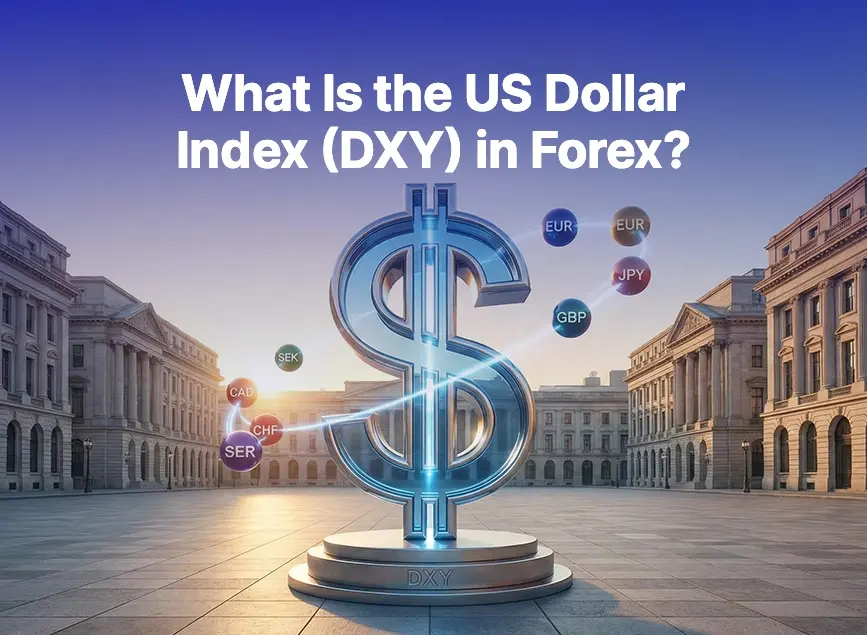
What Is the US Dollar Index (DXY) in Forex?
If you’ve spent any time exploring global markets, you’ve certainly heard about the US Dollar Index, known as DXY. For many beginner traders, it appears to be one of those...
Read more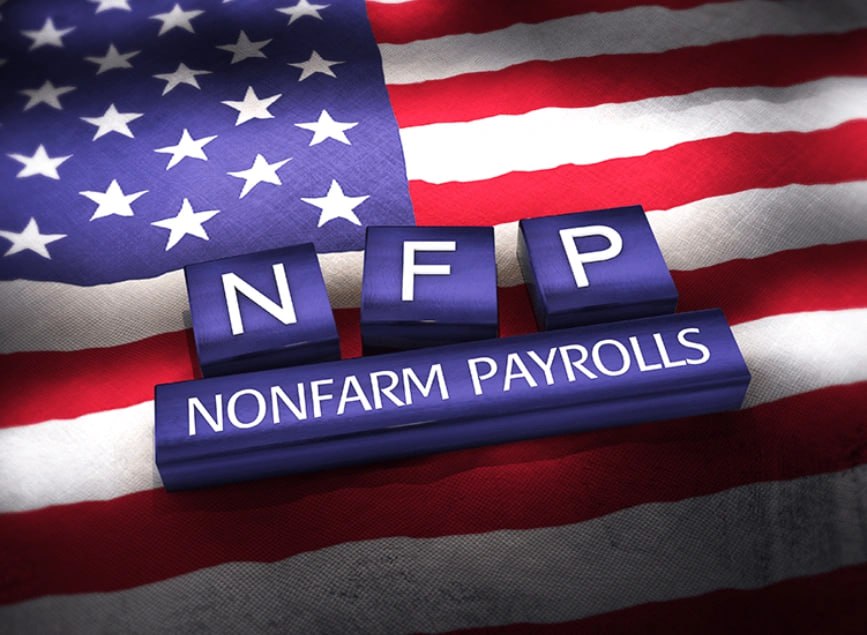
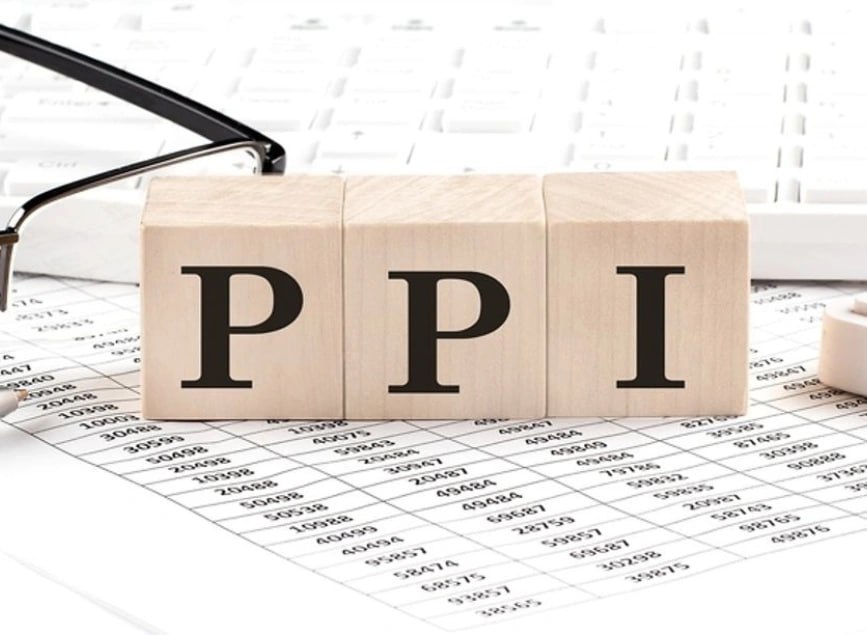
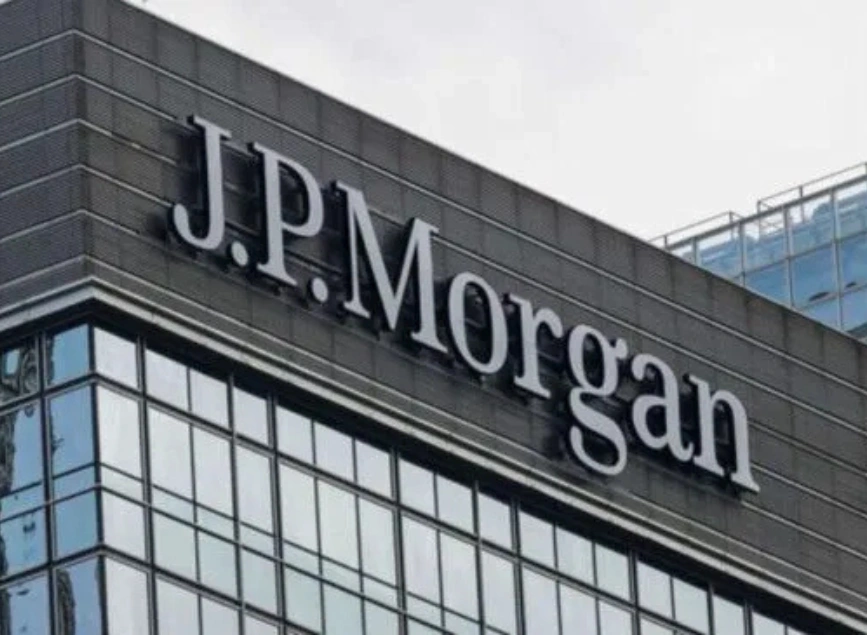
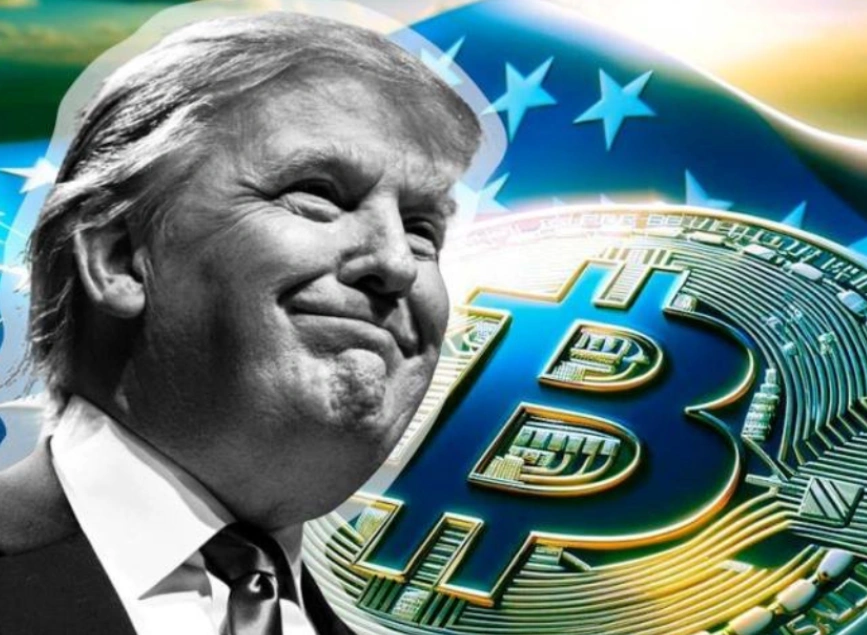
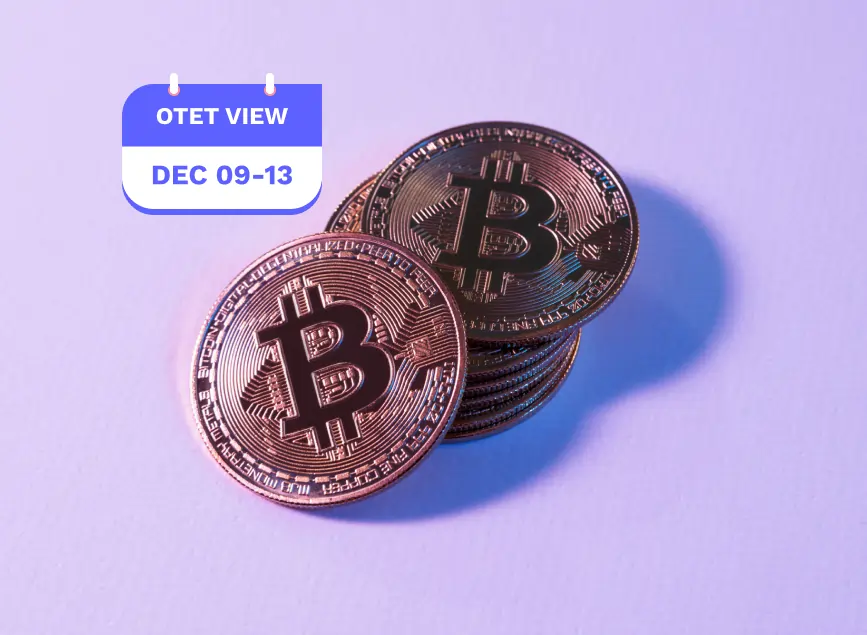
Submit comment
Your email address will not be published. Required fields are marked *